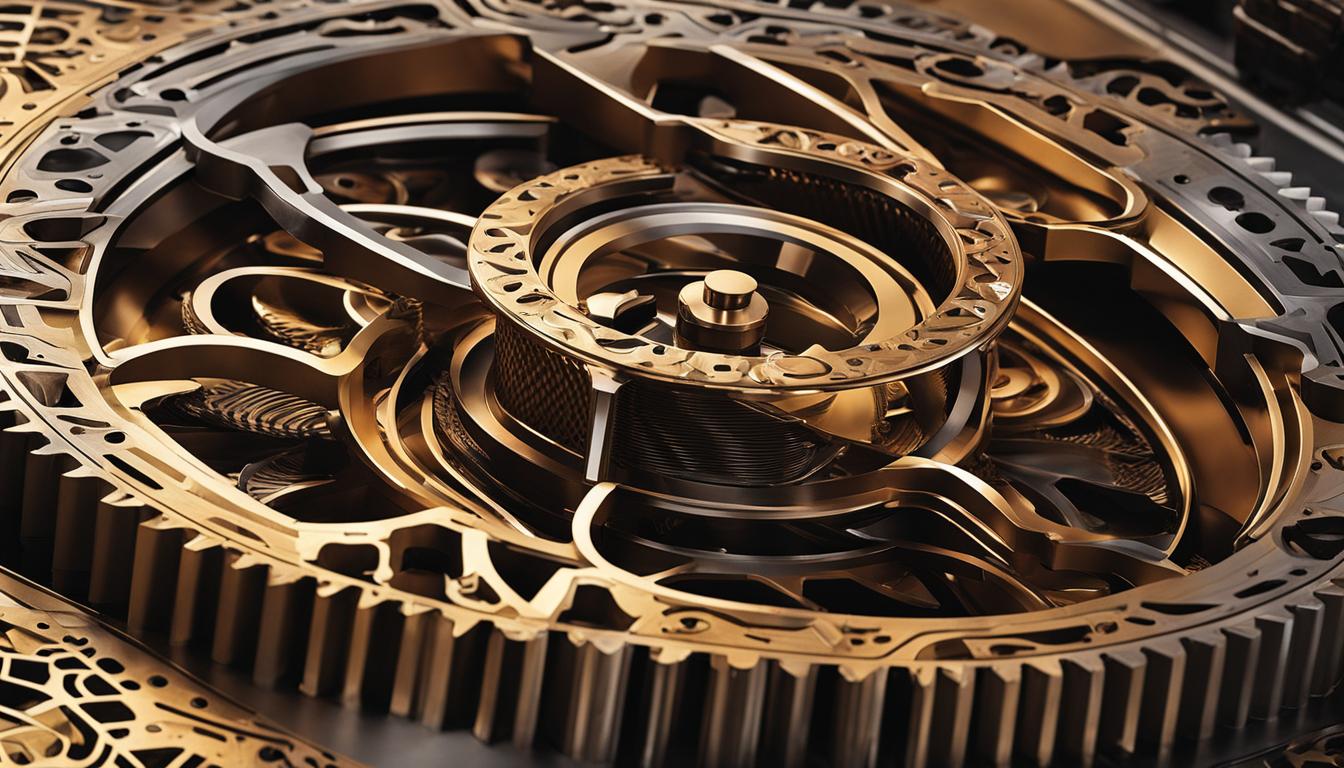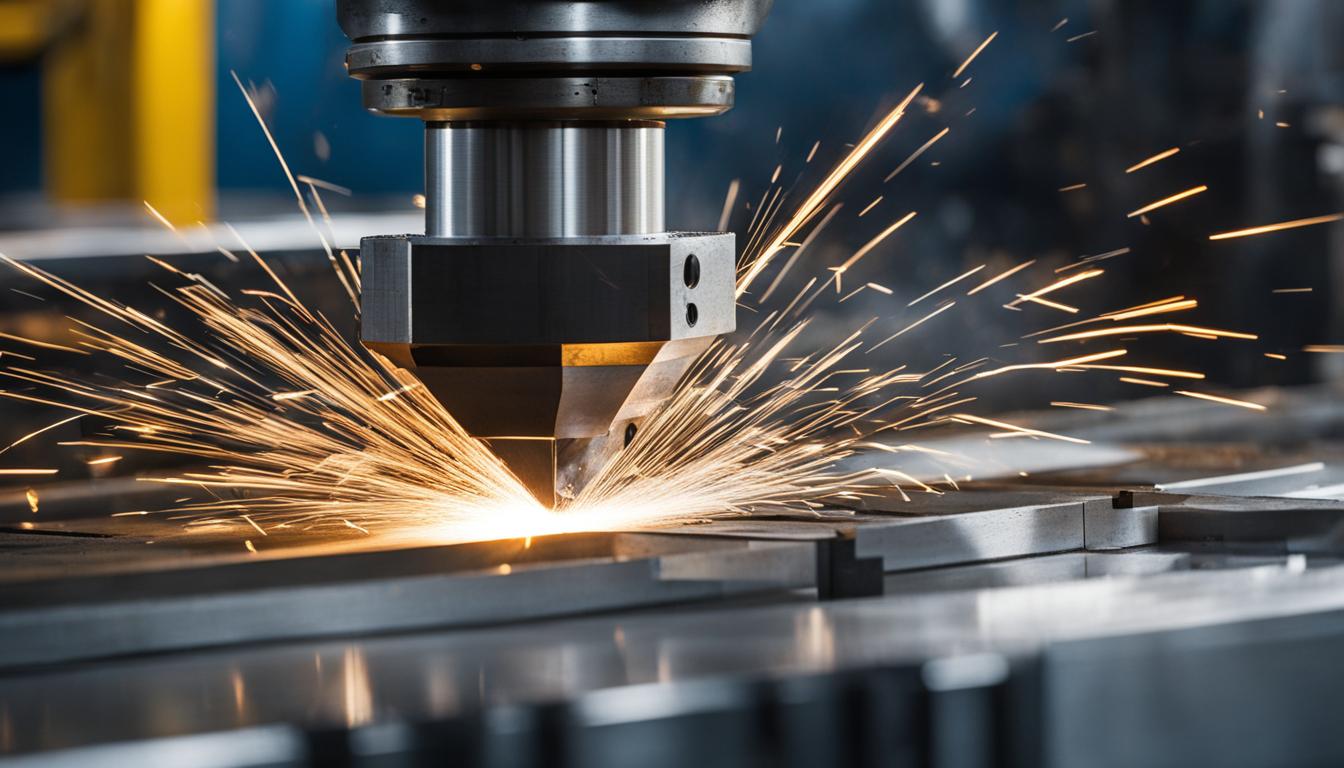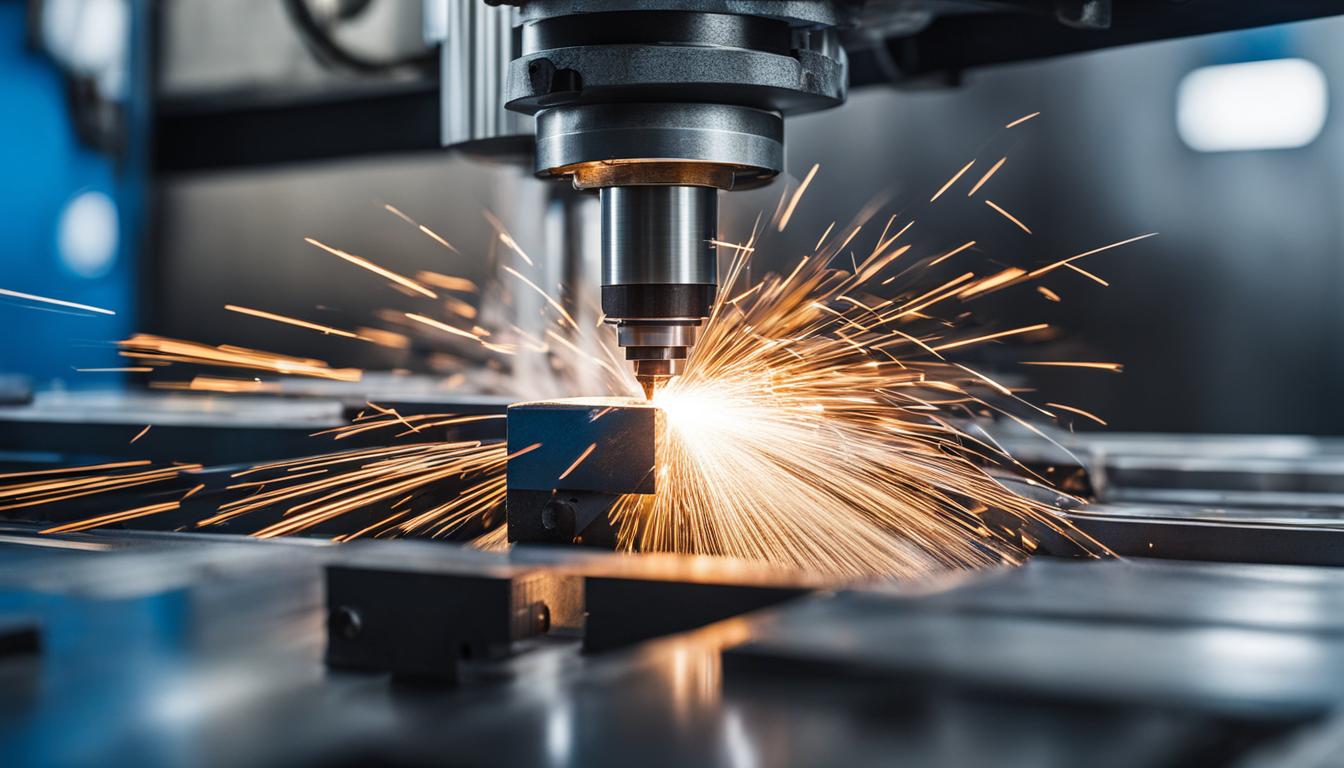CNC stands for Computer Numerical Control, a technology that revolutionized precision machining by automating the control of machine tools through computer programming. This system enables the accurate and repeatable production of complex parts and components across various industries. CNC machines interpret digital instructions, typically in the form of G-code, to guide cutting tools along precise paths, shaping materials such as metal, plastic, wood, and composites with high precision.
The CNC process significantly enhances manufacturing efficiency, reduces human error, and allows for the creation of intricate designs that would be challenging or impossible to achieve manually. CNC technology is widely used in applications ranging from aerospace and automotive manufacturing to medical device production and custom fabrication, offering benefits such as increased productivity, improved accuracy, and the ability to produce consistent results across large production runs.
As CNC systems continue to evolve, they incorporate advanced features like multi-axis machining, adaptive control, and integration with CAD/CAM software, further expanding their capabilities and cementing their role as a cornerstone of modern manufacturing technology.
- CNC stands for Computer Numerical Control
- CNC machining uses computer software to automate machine tool control and movement
- CNC machines can work with various cutting tools and even control non-machine tools
- CNC machining offers high precision, accuracy, and repeatability
- CNC machining is widely used in various industries for precision manufacturing
How does CNC machining work?
CNC machining is a precise and efficient manufacturing method that utilizes computer programming to control machine tools. It offers a wide range of applications in various industries, from aerospace to automotive. But how exactly does CNC machining work? Let’s dive into the process.
To begin with, engineers create a computer-aided design (CAD) drawing of the desired part. This CAD drawing serves as the blueprint for the CNC machine to follow. The CAD drawing is then translated into a language called G-code, which contains instructions on feed rate, tool positioning, and speed.
Once the G-code program is ready, it is loaded into the machine control unit (MCU) of the CNC machine. The MCU is a microcomputer that reads and executes the program. Before running the program with the actual material, a test run is typically performed to ensure proper positioning and performance.
When everything is set, the CNC machine tool begins its work. The program guides the machine’s movements, precisely controlling the cutting tool’s path. The machine tool removes material from the workpiece according to the CAD drawing and G-code instructions. This process repeats until the desired shape and dimensions are achieved.
It’s important to note that CNC machining can be used with various cutting tools, such as mills, lathes, routers, drills, grinders, water jets, and lasers. The specific tool used depends on the requirements of the part and the material being machined.
Overall, CNC machining offers exceptional precision and repeatability, making it a preferred method for producing complex and high-quality parts. With the use of computer programming and advanced machine control systems, CNC machining has revolutionized the manufacturing industry.
| Advantages | Limitations |
|---|---|
| 1. High precision | 1. Higher cost compared to other production methods |
| 2. Efficient and repeatable | 2. Requires skilled CNC programmers |
| 3. Scalable production | 3. Regular machine updates and maintenance |
| 4. Complex and intricate designs possible | 4. Limitations in size and complexity of parts |
| 5. Minimal material waste | |
| 6. Improved worker safety |
Benefits of CNC Machining
CNC machining offers numerous advantages in the manufacturing industry. It utilizes computer software to automate machine control and movement, resulting in increased production efficiency and scalability. By reducing human interaction, CNC machining improves worker safety in the manufacturing process. The elimination of human errors ensures greater precision, complexity, speed, flexibility, and repeatability in producing parts. Furthermore, CNC machining enables contour machining, allowing the milling of intricate and contoured shapes with ease.
Another key benefit of CNC machining is the faster programming process made possible by integrated CAD (computer-aided design) and CAM (computer-aided manufacturing) software. This integration streamlines the design-to-production workflow, reducing overall lead times. Additionally, CNC machines can be integrated with enterprise resource planning (ERP) software, providing operational intelligence and enhancing overall manufacturing efficiency.
Let’s explore the benefits of CNC machining in more detail:
- Cost Reduction: CNC machining reduces costs by improving production efficiency, minimizing material waste, and optimizing resource utilization.
- Enhanced Precision: CNC machines consistently produce high precision parts with tight tolerances, ensuring product quality and performance.
- Increased Complexity: CNC machining enables the creation of intricate and complex designs that would be difficult to achieve manually.
- Improved Speed: CNC machines can perform operations at high speeds, resulting in faster production cycles and shorter lead times.
- Flexibility: CNC machines can quickly switch between different tasks and product variations, offering greater flexibility in manufacturing.
- Repeatability: CNC machines can reproduce the same part with consistent quality, ensuring uniformity in large-scale production.
Overall, CNC machining provides a wide range of benefits that contribute to cost savings, improved productivity, and enhanced product quality in the manufacturing industry.
CNC Machining Applications in Industries
CNC machining is widely utilized in various industries, catering to their specific needs for precise and high-quality parts. Let’s explore some of the key industries that extensively rely on CNC machining.
Aerospace Industry
In the aerospace industry, CNC machining plays a critical role in manufacturing components that require exceptional precision. From engine parts to intricate aerospace structures, CNC machining ensures the dimensional accuracy and reliability demanded by the industry.
Medical Industry
The medical industry relies heavily on CNC machining to produce specialized and high-quality medical equipment. From surgical instruments to implants and prosthetics, CNC machining enables the production of intricate and customized medical devices.
Automotive Industry
CNC machining is a key driver of innovation in the automotive industry. From prototyping to mass production, CNC machining ensures the efficient and precise manufacture of automotive parts, contributing to the advancement of vehicle technologies.
Electronics Industry
The electronics industry benefits from the accuracy and flexibility offered by CNC machining. From manufacturing circuit boards to intricate electronic components, CNC machining enables the production of precise and intricate parts required in electronic devices.
Oil and Gas Industry
In the oil and gas industry, CNC machining is used to ensure the precise and proper fit of large machinery parts. CNC machining plays a crucial role in the manufacturing of components for drilling equipment, pumps, valves, and other critical machinery used in the exploration and extraction of oil and gas.
Marine Industry
The marine industry relies on CNC machining for the manufacturing of highly precise parts required for marine equipment. From propellers to ship components and navigation systems, CNC machining ensures the accuracy and reliability needed in the challenging marine environment.
In summary, CNC machining finds extensive applications in industries such as aerospace, medicine, automotive, electronics, oil and gas, and marine. Its ability to deliver precision, efficiency, and reliability makes it a vital technology in the modern manufacturing landscape.
History and Evolution of CNC Machining
CNC machining has a rich history that dates back to the 1940s when punch tape-controlled devices were first introduced. However, it wasn’t until 1949 that the concept of CNC machining as we know it today was truly born. John Parsons and Frank Sutlens invented this revolutionary technology, forever changing the landscape of precision machining.
In its early stages, CNC machines relied on punch cards for movement control. These machines were a significant improvement over traditional manual machining methods, offering increased accuracy and efficiency. However, with the rapid development of computing technology, punch cards were eventually replaced by G-code programming.
G-code programming transformed CNC machining, allowing for more complex and precise movements. This programming language enabled engineers to create detailed instructions for the CNC machine, specifying the feed rate, tool positioning, and speed with unparalleled accuracy.
Over the years, CNC machining technology continued to evolve. Advancements in computer hardware and software led to improved precision, efficiency, and integration with other design and manufacturing processes. CNC machines became capable of producing intricate 3D machine parts, bringing a new level of versatility to the world of manufacturing.
Today, CNC machining is considered the driving force behind modern manufacturing processes. It has completely revolutionized the industry, offering a level of precision and efficiency that was once unimaginable. Integration with CAD and CAM software allows for seamless transition from design to production, making CNC machining an essential tool for a wide range of industries.

CNC machining has come a long way since its inception, and its future looks even more promising. Advancements in automation, artificial intelligence, and additive manufacturing are expected to further enhance the capabilities of CNC machines. As technology continues to evolve, CNC machining will continue to play a crucial role in shaping the manufacturing industry.
Different types of CNC machines
CNC machines are versatile and can be classified based on their operation and design. One way to classify CNC machines is based on the number of axes they can operate in.
There are 2-axis CNC machines that can move in the X and Z axes, allowing for two-dimensional machining operations. These machines are commonly used for simple cutting and drilling tasks.
3-axis CNC machines are able to move in the X, Y, and Z axes, allowing for three-dimensional machining operations. These machines are capable of performing more complex tasks and are widely used in various industries.
For even more advanced operations, there are multi-axis CNC machines that can move in multiple directions. These machines have the ability to rotate and tilt, providing greater flexibility and precision in machining.
Another classification of CNC machines is based on the specific type of operation they perform. Some common types include:
- Milling machines: These machines use rotating cutting tools to remove material from a workpiece and create complex shapes and designs.
- Lathes: Lathes are used to rotate a workpiece and perform various cutting operations, such as turning, facing, and threading.
- Routers: Routers are primarily used for cutting, shaping, and hollowing out materials, often in woodworking or metalworking applications.
- Grinders: Grinders are used for precision grinding and polishing operations, ensuring smooth and accurate surfaces.
Each type of CNC machine has its own advantages and is suited for different applications. The choice of CNC machine depends on the specific requirements of the project and the desired outcome.
Main Stages of the CNC Machining Process
The CNC machining process consists of several stages that ensure precise and efficient production of parts. Here are the main stages involved:
1. Blueprint Creation
The first stage involves creating detailed blueprints for the desired parts. These blueprints serve as the foundation for the entire machining process. They include dimensions, tolerances, and other specifications necessary for producing accurate parts.
2. Conversion to CAD Models
Once the blueprints are finalized, they are converted into digital computer-aided design (CAD) models. CAD software allows for 3D modeling and provides a virtual representation of the parts. This step ensures that the machining process accurately reflects the intended design.
3. Conversion to CAM Format
After the CAD models are created, they are converted into computer-aided manufacturing (CAM) format. CAM software generates the toolpaths and instructions required for the CNC machine to produce the parts. This step ensures that the machine can understand and execute the machining program effectively.
4. Machine Configuration
The next stage involves configuring the CNC machine for the specific job. The operator loads the CAM program into the machine’s computer control unit and mounts the workpiece onto the machine bed or fixture. This stage includes setting up the necessary tools, fixtures, and workholding devices to ensure accurate machining.
5. Program Execution
Once the machine is configured, the operator initiates the program execution. The CNC machine follows the instructions in the CAM program to perform the required operations on the workpiece. It precisely controls the movement, speed, and cutting parameters to achieve the desired result. This stage showcases the automation capabilities of CNC machining, allowing for accurate and consistent production.
6. Workpiece Inspection
After the machining operations are completed, the workpiece is unloaded from the machine and subjected to inspection. Quality control measures, such as dimensional checks, surface finish evaluations, and material testing, are carried out to ensure the parts meet the required specifications. This final stage ensures that the produced parts are of high quality and adhere to the design intent.

Advantages and Limitations of CNC Machining
CNC machining offers numerous advantages that make it a preferred manufacturing method in various industries. However, it also has certain limitations that need to be considered. Let’s explore the advantages and limitations of CNC machining:
Advantages of CNC Machining
- Increased Precision: CNC machining ensures high precision and accuracy in the production of complex parts, resulting in superior product quality.
- Enhanced Efficiency: The automation and computer-controlled nature of CNC machines significantly improve production efficiency by reducing human error and streamlining operations.
- Scalability: CNC machining is highly scalable, allowing for both small-scale production runs and large-scale manufacturing with consistent quality.
- Worker Safety: With CNC machines handling most of the manufacturing tasks, it reduces the need for human involvement, minimizing risks and ensuring worker safety.
- Cost Reduction: CNC machining reduces costs by optimizing material usage, minimizing waste, and eliminating the need for manual labor in many production processes.
- Complex Designs: CNC machines can produce intricate and complex designs that would be challenging or impossible to achieve using traditional manufacturing methods.
Limitations of CNC Machining
- Higher Cost: CNC machines can be more expensive to acquire and maintain compared to other manufacturing methods, making them less suitable for small-scale or budget-constrained operations.
- Skilled Programming: Properly operating CNC machines requires skilled programmers who can create and optimize programs for specific parts, which may increase staffing costs and training requirements.
- Maintenance Needs: CNC machines demand regular maintenance and updates to ensure optimal performance, leading to additional time and resource requirements.
- Size and Complexity Constraints: CNC machining may have limitations in producing very large or extremely complex parts that exceed the machine’s size or capability.
Despite these limitations, the advantages of CNC machining far outweigh the constraints, making it a valuable and widely used technology in modern manufacturing.
Future Trends in CNC Machining
The future of CNC machining is poised to witness significant advancements and innovations that will revolutionize the industry. One of the key trends that will shape the future is the increasing focus on automation. Manufacturers are exploring ways to automate various aspects of CNC machining, from tool changing and material handling to quality control. By incorporating automated processes, companies can improve productivity, reduce downtime, and enhance overall efficiency.
Another important trend is the integration of CNC machining with emerging technologies such as artificial intelligence (AI) and the Internet of Things (IoT). AI-powered algorithms can optimize CNC machining processes by analyzing data in real-time, identifying patterns, and making predictive adjustments to enhance performance and precision. Additionally, the integration with IoT enables remote monitoring and control of CNC machines, facilitating proactive maintenance, and minimizing downtime.
Furthermore, the combination of additive manufacturing techniques with CNC machining is expected to gain traction in the future. This hybrid approach allows for the production of complex, high-value parts with improved efficiency and reduced material waste. By leveraging the benefits of both technologies, manufacturers can achieve greater design flexibility, faster prototyping, and cost-effective production.
Advancements in software and programming languages will also play a crucial role in shaping the future of CNC machining. More user-friendly interfaces and intuitive programming tools will make CNC machining accessible to a wider range of operators, reducing the learning curve and enabling faster adoption. Additionally, enhanced software capabilities will enable advanced simulations and virtual prototyping, allowing manufacturers to optimize machining processes and maximize efficiency.
